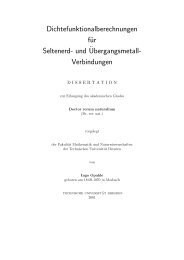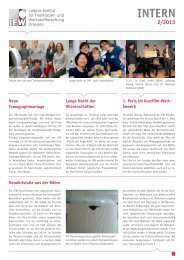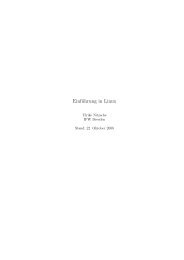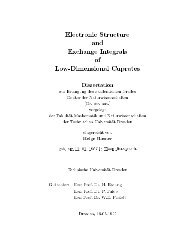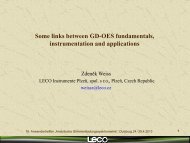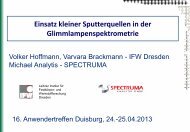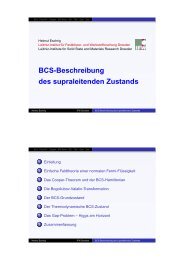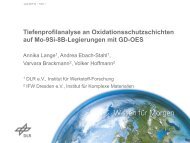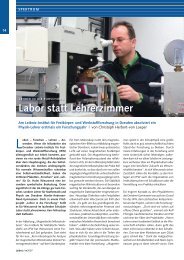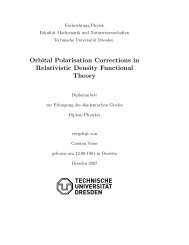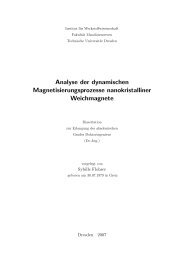ALBERTO BOLLERO REAL
ALBERTO BOLLERO REAL
ALBERTO BOLLERO REAL
You also want an ePaper? Increase the reach of your titles
YUMPU automatically turns print PDFs into web optimized ePapers that Google loves.
2.2 Magnetic properties<br />
Fig. 2.6: Hysteresis loop for a permanent magnet material indicating by dashed lines the<br />
characteristic initial magnetisation curve for the case of pinning and nucleation<br />
mechanisms (from Skomski and Coey [19]).<br />
single domain size diameter [11,27]. The detailed demagnetisation behaviour of such<br />
materials will depend on the type and the strength of the magnetic interaction between the<br />
small grains. The magnetisation process of a certain class of fine-grained magnets will be<br />
discussed in Section 3.3 and Chapter 8.<br />
The pinning mechanism is typical of materials with pronounced nanoscale<br />
inhomogeneities. The effectiveness of the pinning will depend on the geometry and spatial<br />
distribution of the pinning centers, being necessary a sufficiently high density of such<br />
centers not uniformly distributed [28]. The pinning will be most pronounced when the size<br />
of the pinning centers is comparable to the domain wall width. In addition sharp<br />
boundaries may be very effective pinning centers. Sm 2 Co 17 -based magnets constitute a<br />
good example of this type of magnets where the pinning of the domain walls takes place in<br />
the SmCo 5 boundary phase [28,29].<br />
15



